Female firefighters are in the minority, but these firefighters say women make departments stronger
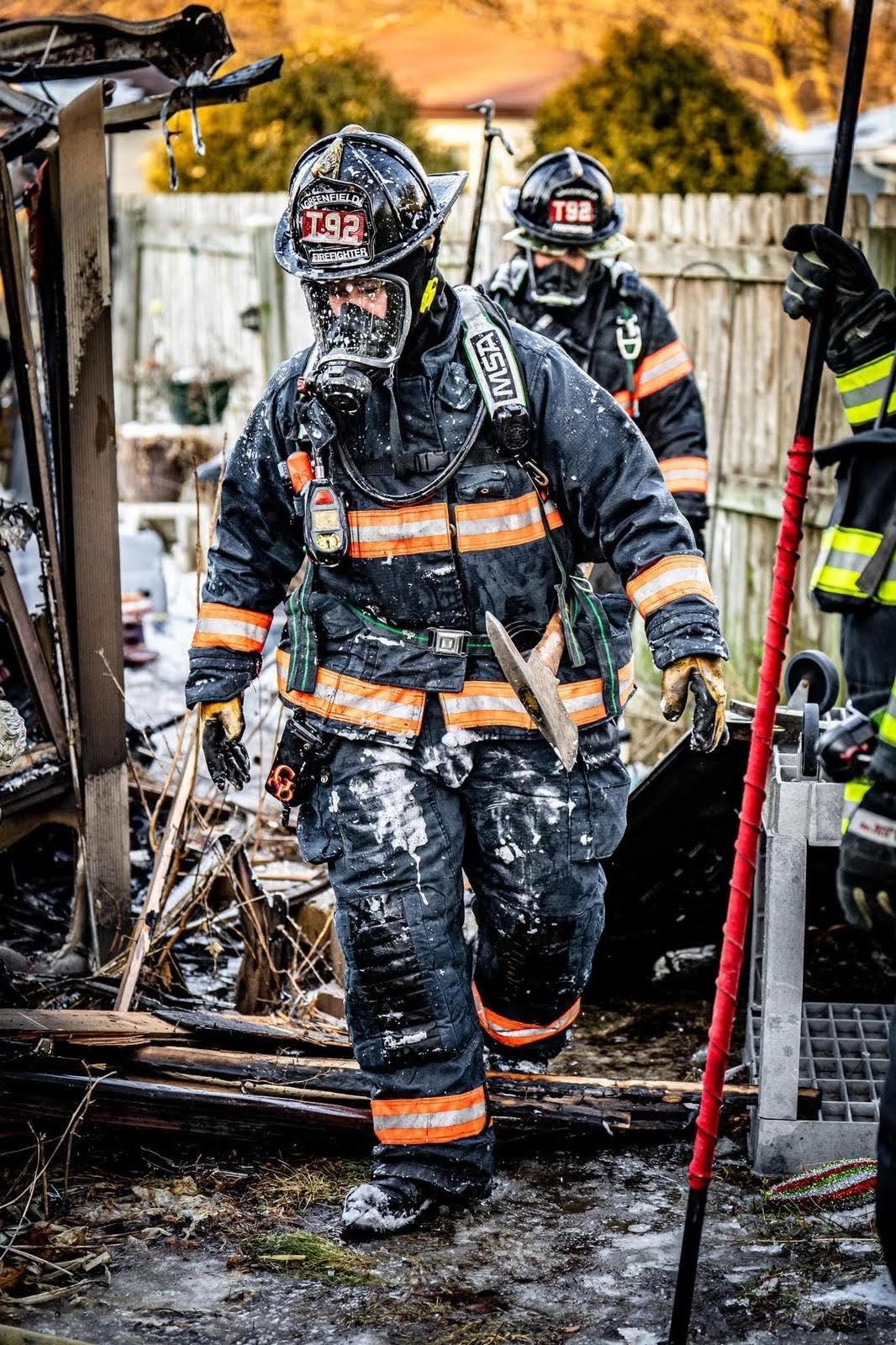
When Shannon Anthoine is in public in her impressive uniform, she gets a lot of comments, questions and stares. "What do I call you?" asked one girl.
A firefighter is fine, Anthoine said.
She knows she is a role model and would like to see more female firefighters. "Females add another dimension to the department," Anthoine said.
There is an event on May 9 — sponsored by the Association for Non-traditional Employment for Women — to learn about fire/EMS career opportunities.
Anthoine started her career as a firefighter after she realized pursuing her business major at the University of Wisconsin-Whitewater was not the right fit. When she saw a woman with a fire rescue uniform on campus, she asked about it.
After taking her first rescue class, Anthoine was hooked. She has now been in the EMS/fire service for the last 18 years, including nearly three years as assistant chief for the Franklin Fire Department.
"I fell in love with it," she said. "I love the atmosphere and helping people. You are helping them at their worst time."
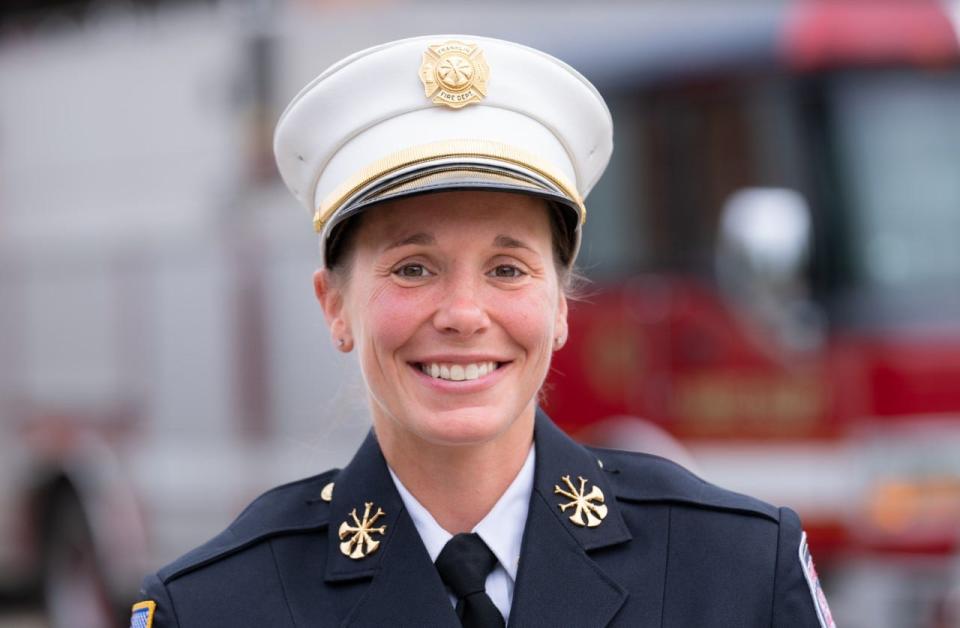
Courtney Hull, Waukesha County Technical College's associate dean of Fire/EMS training, who has also worked as a career firefighter/EMT since 2003, said recruiting women can help with firefighter shortages.
"Every department is hurting for personnel," Hull said. "There couldn’t be a better time than now for women to seek out a career in the fire service. With the current recruitment crisis and small candidate pools, services need a larger candidate pool to recruit from."
The staffing shortage is familiar to Waukesha Fire Department Assistant Chief Joseph Hoffman.
"We used to have 300 to 400 applicants for one to two jobs," Hoffman said. "We may (now) get a dozen applicants (for an opening)."
'A diverse workplace makes us better,' fire chief says
Greenfield Fire Chief Jon Cohn recalls when his two daughters would regularly ask questions about the female firefighters in his department.
"(Having female staff) gives them the motivation and the confidence because (the female firefighters) have broken barriers," he said. "It is great these role models are out there."
He said having female firefighters "represent our communities better."
"A diverse workplace makes us better." Cohn said there are currently six female firefighters in his department.
Hoffman, whose department has seven female firefighters, said having a diverse team can build stronger relationships and help the community.
"I can't say enough that diversity only leads to better service," Hoffman said. "The more we parallel the community, the better."
According to the National Fire Protection Association, 9% of the total number of firefighters in the U.S. are women. For the fire departments in Waukesha and Milwaukee counties contacted for this story, approximately 16% had female firefighters.
However, WCTC is seeing an increase in females pursuing firefighting.
In 2014, 13.2% of the students in WCTC's firefighting classes were female. That has increased to 31.2% in 2023.
'As women, we have a great opportunity to be kind and compassionate providers'
On one occasion when Hull responded to a unique call, her coworkers were glad they were working with a woman firefighter: She had to deliver a baby.
"Delivering babies in the field isn't a normal occurrence, but the one time I did deliver, it was clear that my crew members were happy I was there to take the lead," she said.
Hull said responding to pediatric emergencies is another area where female firefighters and EMS staffers are able to be very helpful.
"Pediatric emergencies are always a tough call for any EMS responder, and often times I felt a pediatric patient gravitate to my care," she added.
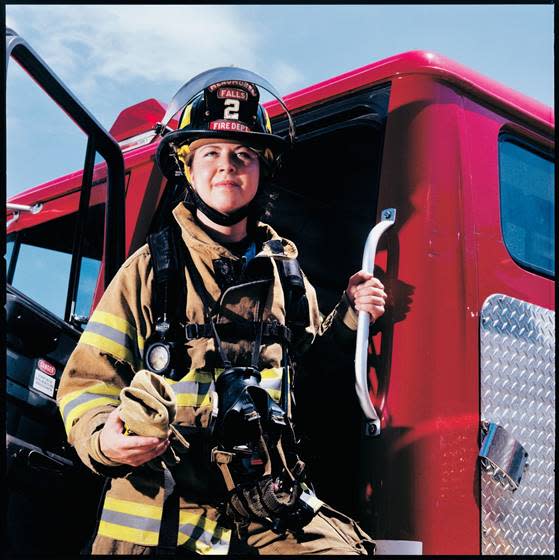
She said that fire departments also deal with more EMS calls than strictly fire emergencies, and the staff are trained for both calls.
"If a child was sick or injured, a female in a domestic violence (situation) or with childbirth, the crew members looked at me to take charge," explained Hull. "It (having a female) made us more well-rounded."
Shannon Richter, a firefighter with the Greenfield Fire Department, added that as a female, she tries to take control of de-escalating a situation when there is a "combative or angry patient."
"I feel people generally respond better to a female (rather) than a male co-worker trying to do the same thing in that scenario," she said.
Anthoine added that when there is an emergency when dealing with kids, it can be helpful to have female firefighters and paramedics on the scene.
She said it is similar to having "another 'mother figure.'"
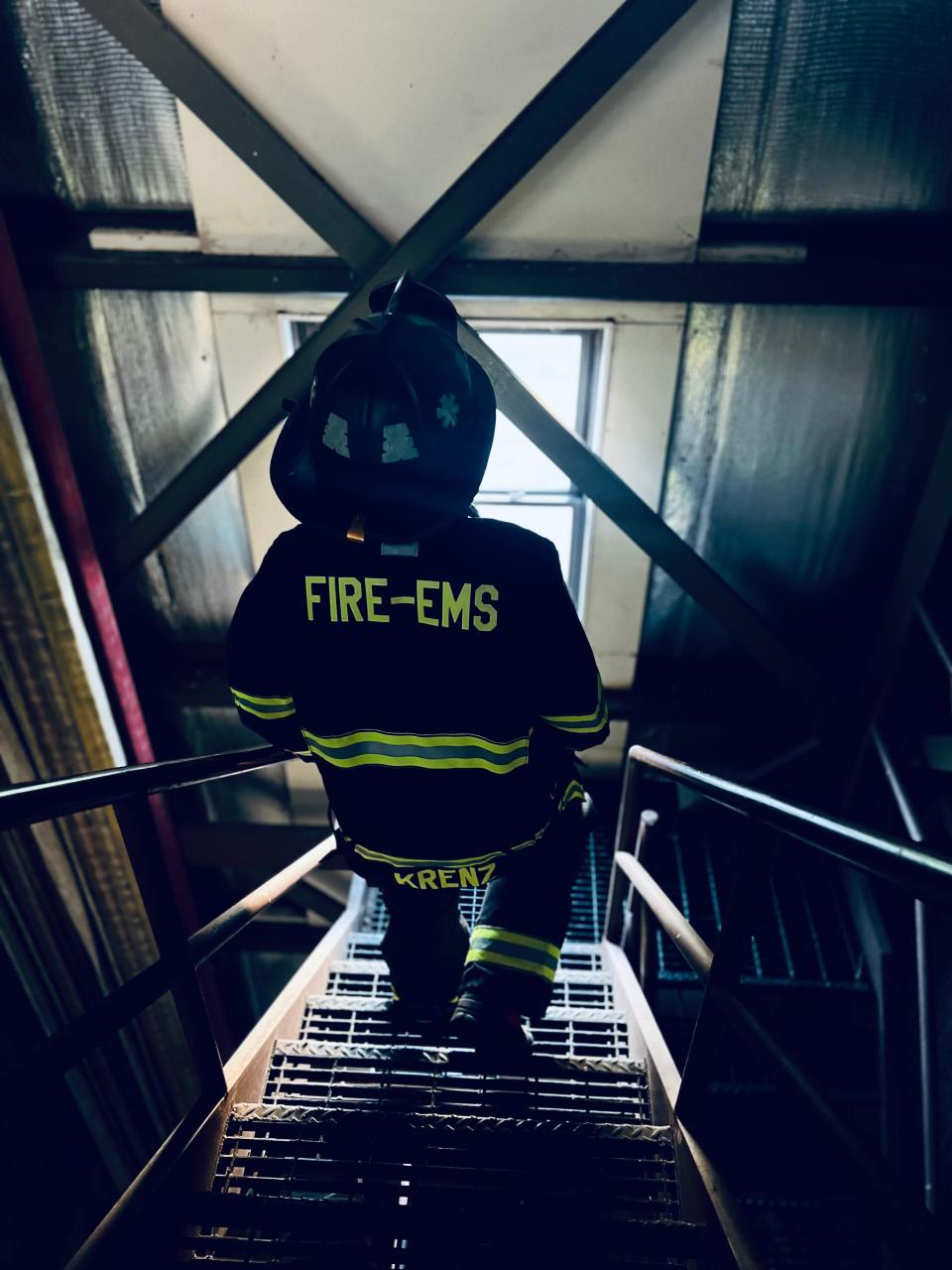
Madison Krenz, who has been a firefighter since 2019 and currently works full-time for the Cambridge Area EMS and is paid-on-call with the Western Lakes Fire District, said there is "a great opportunity to be a strong support to new mothers, domestic violence victims, sexual assault victims, and female patients in general."
"We often can relate with female patients and provide an extra sense of comfort when providing emergency care," Krenz said. "For moms working as paramedics, they can serve as a support on scene for mothers when providing care to pediatric patients. Overall as women, we have a great opportunity to be kind and compassionate providers."
"We need all types. So much focus was on the physical. It is also the emotional, compassion and the empathy component," added Hoffman.
Performing tasks differently than men can be more effective
Some women may have smaller shoulders, are smaller overall and therefore, may be more agile than their male counterparts, said Hull. Because of this, women can be lifted into smaller spaces or can climb on a person's shoulders to get into windows more easily.
This was the case for Hull.
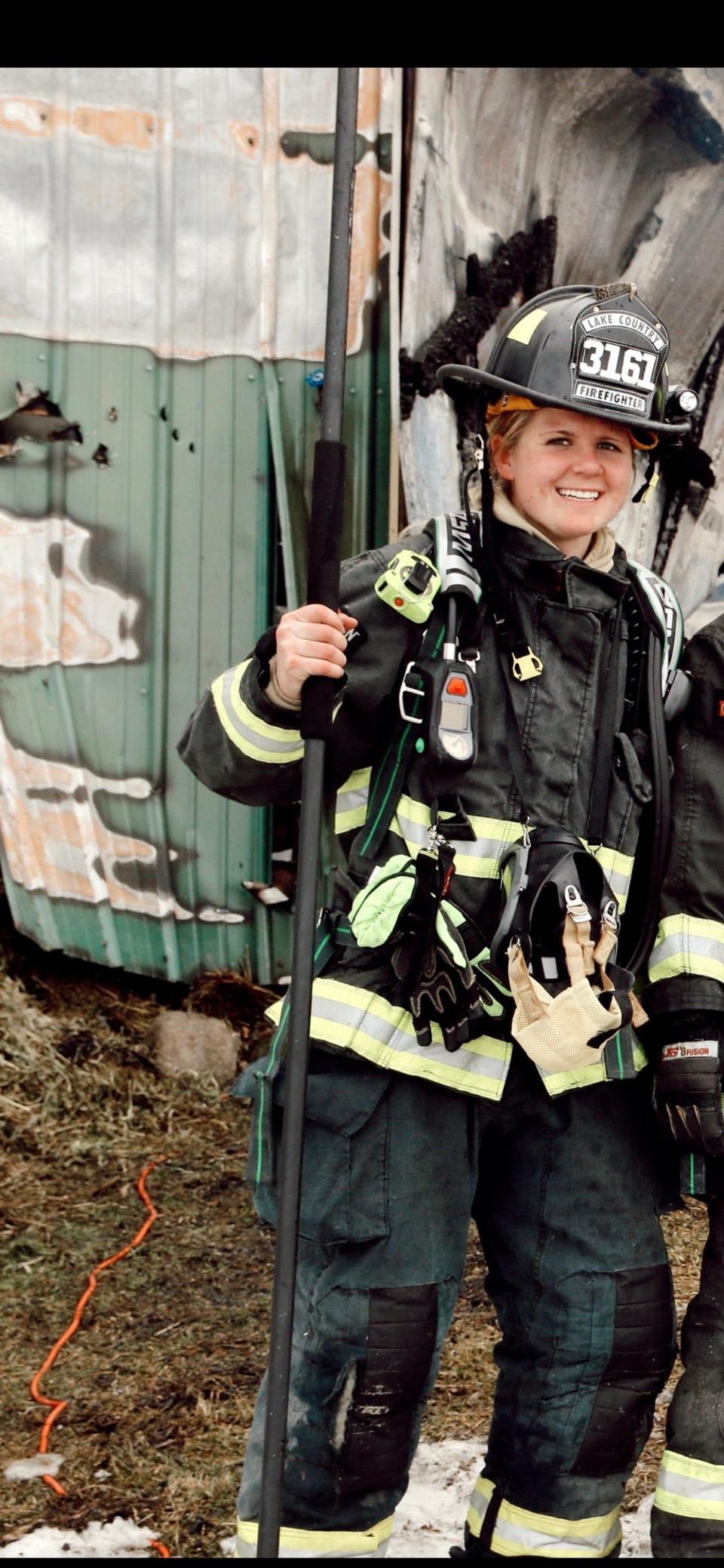
"I could tell they valued my presence. There are unique things," Hull said. "I could fit in narrow spaces." She said this was helpful for "confined space" rescuing.
Hull also said that women typically have to use their body differently and said she has found she can do identical tasks the same or even better than men.
She had to learn the hard way when she was training for her Candidate Physical Ability Test ― a physical test that firefighter candidates must pass which includes stair climbing, a hose drag, an equipment carry, forcible entry and a ladder raise and extension.
Hull said she worked for weeks in building her upper body strength. "When I showed up to take the CPAT, my legs gave out on the second to last station as I hadn’t properly prepared as a female candidate," she said.
A female firefighter saw her struggle and said, "Try this," teaching Hull to use her legs, core and entire body more than her upper body alone. "Women have a lower center of gravity and therefore often have strength in different areas," she said.
"I went back to the gym for three months and focused on core and lower body strength and the next time I passed the CPAT with over a minute to spare," she said.
Changing the perspective of what a firefighter should look like
When Richter was in high school in the late '90s, she took a career interest test. Her skills showed firefighting, but the staff at her high school nudged her toward nursing and teaching — women-dominated careers.
"I felt (firefighting) was not an option," Richter said. "It matched my interests but was not presented as an option. I like working as a crew, helping people, fixing problems and seeing crazy scenarios."
Hull remembers as one of the only females in her firefighting class, her instructor asked her to stay after class. He offered her another option for a textbook in case the one used by the class would be too hard for her. But she did not need it, she was nearly a straight-A student.
Richter and Hull have found that often the "spotlight" shines on them, being a female, and feel they have to prove themselves. "I find that people have that 'look.' As if I don't have the strength to do that," said Richter.
But Hull said that is changing.
She said the image that fire departments were "good old boys clubs" is changing, and at WCTC, the culture is changing as well. "It is the mindset that anyone can come in and succeed," she said.
Krenz said that she when she tells people she is a firefighter, "their eyes widen."
"Being a female and a fighter can be a rare find," she said. I am always so proud to serve with so many strong and resilient females. Many years ago, women would never have had the opportunity to serve as firefighters. There isn’t a day that goes by where I’m not grateful to get to serve as one today," she said.
"It’s very important to me to always represent females in the fire service with integrity, pride, and gratitude."
For more information and resources on becoming a firefighter
A Women in Fire/EMS event for females exploring the firefighter field, featuring Krenz and Richter, will be held from 4 to 5 p.m. on Tuesday, May 9, at WCTC, 800 Main St., Pewaukee.
From 4 to 7 p.m. the same day, also in the lobby at WCTC, there will be a chance to network with students, firefighters and WCTC staff about careers in firefighting.
The Kristin Ciganek-Schroeder Memorial Scholarship: Founded in the memory of Lt. Kristin Ciganek-Schroeder, the scholarship supports women training for a career in the fire service. Inquire about the next scholarship round after June 1 at www.ignitethespiritmke.org.
Marcia Helleckson-Rosecky Memorial Fund: Established to support and encourage women to become firefighters. Helleckson-Rosecky was at the Middleton Volunteer Fire Department before joining the City of Brookfield Fire Department in 1997. In 2016, she died of cancer at age 41. For more information, visit bit.ly/Scholarshipwomenfire.
Cathy Kozlowicz can be reached at 262-361-9132 or cathy.kozlowicz@jrn.com. Follow her on Twitter at @kozlowicz_cathy.
Our subscribers make this reporting possible. Please consider supporting local journalism by subscribing to the Journal Sentinel at jsonline.com/deal.
DOWNLOAD THE APP: Get the latest news, sports and more
This article originally appeared on Milwaukee Journal Sentinel: Having female firefighters makes department better, fire chief says

